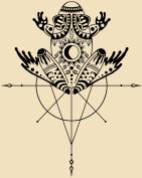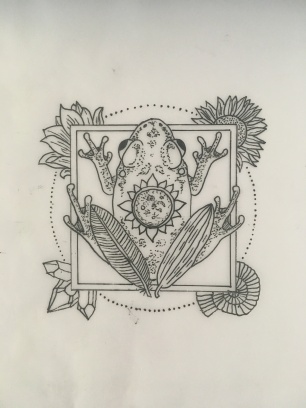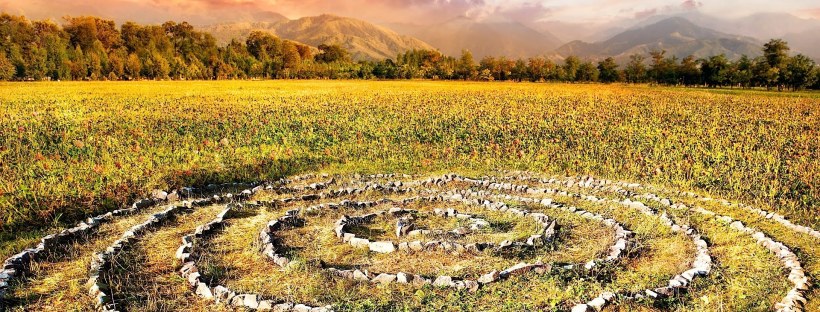
My first tattoo. Inked and finalized by Sylvie le Sylvie.
Pacific tree frogs (Pseudacris regilla) are the most commonly heard frogs in British Columbia. They can change their colour in a matter of minutes. As amphibians, they live their lives in two worlds: the submarine life of a tadpole and the semi-terrestrial life of a grown frog. They embrace the elements of Earth and Water, making their homes in each.
The hind legs of my frog are represented by a feather and a leaf of the broadleaf plantain (Plantago major). The feather is a representation of elemental Air. Broadleaf plantain leaves are used to soothe stings and small cuts. They are like natural bandaids!
The square together with the intangible circle represents the altar, a sacred space, with its magickal circle of power.
Surrounding the altar are four offerings. In the upper left is the flower of the bitterroot (Lewisia rediviva), an edible, if bitter, taproot. Following clockwise is a representation of solar Fire: the sunflower (Helianthus maximiliani). An ammonite fossil (Ammonoidea) resides in the lower right corner. As the remains of an extinct mollusc, ammonites represents the element of Water and mortality. Elemental Stone (or Earth if one prefers) is represented as a quartz cluster (SiO2).
These were not the original symbols and meanings, though the central image of a frog and its connection to the four elements has remained consistent throughout the three year revision process.
From the beginning I was keen to design the tattoo myself and have that design translated by a tattoo artist to better fit the medium of skin and ink. I wanted to have the tattoo inked in my home town of Nelson, BC. After careful consideration, I found the work of Sylvie le Sylvie, of the Timber Tattoo Co. Animals and plants are plentiful in her work, which has a rich, black and white, aesthetic. After a consultation, she made several changes to the design, arriving at the finished product a week later. The tattoo was inked on a drizzly morning on the day after the vernal equinox.
This is my first tattoo. It may not be my last, but for now I could not ask for a more magickal connection to nature, the elements, and the mineral, floral, & animal kingdoms.














